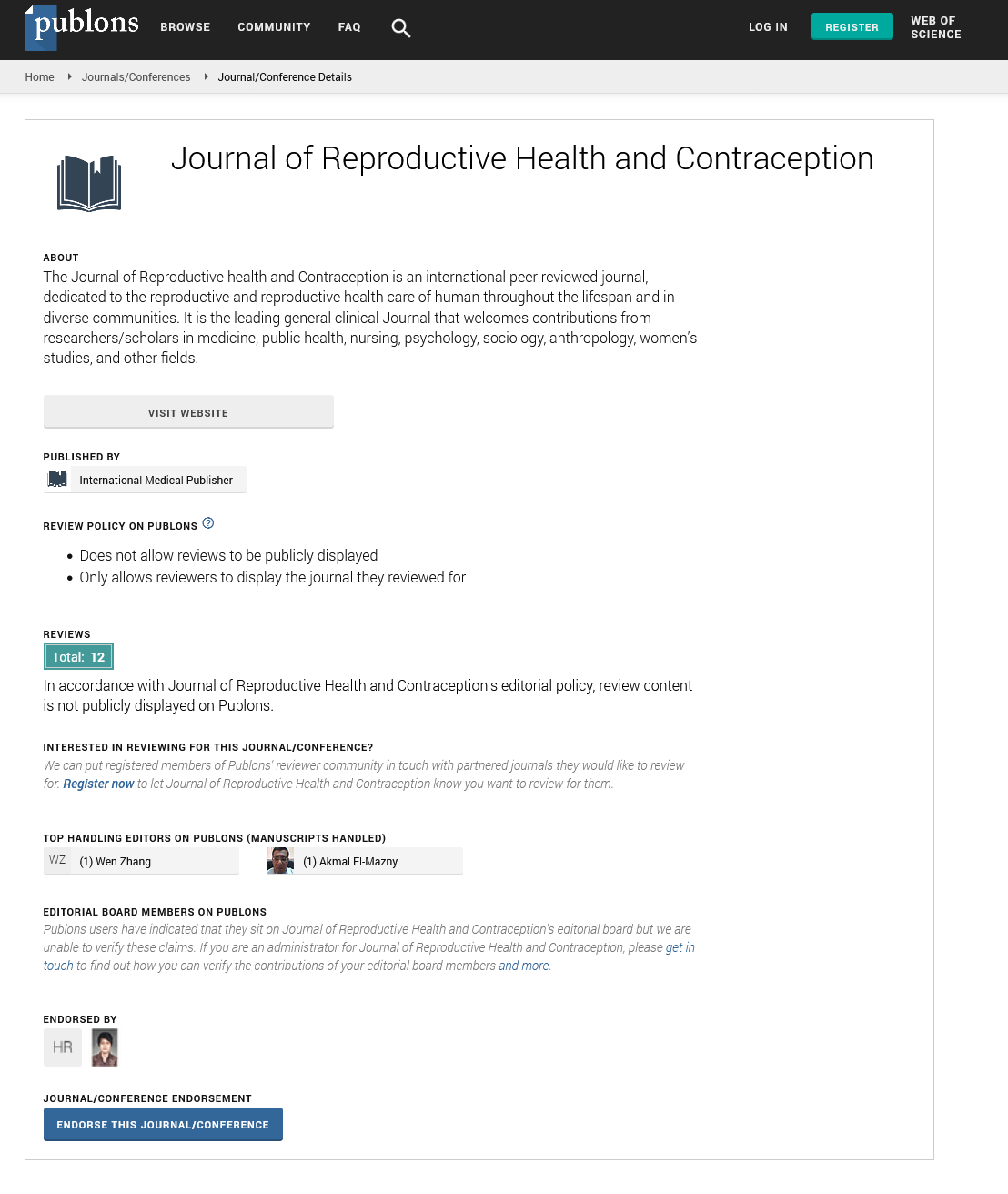Abstract
Presentation and Intervention in Missing Copper T Thread in Reference to Timingof Insertion
Objective
To analyse the impact of time of insertion of Copper T to presentation and intervention for management of missing Cu-T thread.
Methodology and setting
One year data of 57 patients, referred, reported or detected with missing Cu T thread collected. Retrospective data was collected from OT and OPD hospital records and duly completed telephonically.
Outcomes measured
Data was analysed with various interrelated factors like relation to timing of insertion, presentation, complications, number and kind of interventions for its removal.
Type of statistical analysis
Proportion of women with missing Cu T thread were calculated among all women in percentages. Correlation between different groups couldn’t be calculated because of major difference in the number of subjects in groups.
Results
Among 57 women, 30 had post LSCS Cu T insertion, 6 had post NVD, 20 had interval Cu T insertion and 1 had post abortal insertion. Misplaced Cu T was detected in 8 women on USG, 4(50%) had post LSCS, 3(37.5%) post NVD and 1(12.5%) had interval Cu T insertion. OPD removal could be attempted successfully in 30 women; 11(36.67%) post LSCS, 2 (33.33%) post NVD, 16(80%) interval and 1(100%) post abortion insertion. OT removal was needed in 23 women, (17 (56.67%) post LSCS, 2(33.33%) post NVD, 4(20%) interval Cu T insertion). Spontaneous expulsion diagnosed in 4, 2 post LSCS and 2 post NVD Cu T insertion.
Conclusion
There is definite impact of timing of Cu T insertion on incidence of misplacement and expulsion and more studies and data is needed for developing a common information performa to develop SOPs for follow up of such patients.
Author(s): Pooja Rani, Alka Sehgal, Dilpreet Kaur Pandher, Bikramjit Singh Jafra
Abstract | Full-Text | PDF
Share this

Google scholar citation report
Citations : 201
Journal of Reproductive Health and Contraception received 201 citations as per google scholar report
Journal of Reproductive Health and Contraception peer review process verified at publons
Abstracted/Indexed in
- Google Scholar
- China National Knowledge Infrastructure (CNKI)
- WorldCat
- Publons
Open Access Journals
- Aquaculture & Veterinary Science
- Chemistry & Chemical Sciences
- Clinical Sciences
- Engineering
- General Science
- Genetics & Molecular Biology
- Health Care & Nursing
- Immunology & Microbiology
- Materials Science
- Mathematics & Physics
- Medical Sciences
- Neurology & Psychiatry
- Oncology & Cancer Science
- Pharmaceutical Sciences


